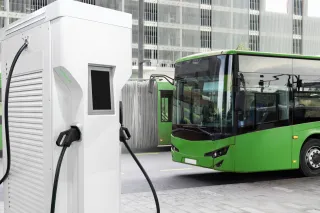An increasing number of companies use technology solutions that are based on situational awareness. What should be taken into account in the planning of situational information systems? We listed three principles that apply to all sectors.
Situational awareness is the understanding of what is happening around us, and it can be either human- or machine-generated. It supports decision-making and foresight based on real-time observation and the combination of different information sources. Observations may be collected, for example, by various indicators, sensors or drones, the latter being an example of a moving sensor. Situational awareness is applied especially in circumstances where observation is difficult. These include machine assisted surgery, self-driving cars or autonomous underground mining machines.
The broad concept has several interpretations that vary depending on the sector of application. We often focus on differences between the sectors, but what do the different applications have in common? We identified three principles, each of which applies regardless of the sector.
1. Reliability and Comparison
Situational awareness can be applied in safety-critical sectors such as transport. It is therefore a priority to ensure that decision-making is based on a number of reliable sources. The data produced by the sources can also be compared to each other, for example with the help of artificial intelligence. In addition, it must be ensured that no external interference, intentional or unintentional, affects access to information.
An example of cooperation between detection devices is the FireMan project, which VTT is also part of. The project develops methods for detecting small forest fires with drones. Drone flocks are used to detect forest fires when they first start, which makes early fire extinguishing possible. The drones measure the height and heat of the flames, and the received data is combined with spatial data. This provides a reliable and real-time situational picture of the progress of the fire, which relies on several sources.
2. Safety and Testing
Situational awareness is risk management and preparing for potential security threats. Which risks can be taken depend on the sector of application. The planning must include a sector-specific assessment of the risk in relation to its consequences.
For example, an error in air traffic can at worst lead to loss of life. In a high-risk sector, situational information must be as up-to-date, versatile and reliable as possible.
It is important to invest in security already in the construction of the system architecture. The software code must be intact and reliable. Safety risks can be minimised through system testing and various simulators. Redundancy ensures that failure of an individual component or part does not endanger the operation. Testing is expensive but also an investment in system safety. In the aviation sector, it is typical that different actors share information on safety risks. Could similar information sharing be possible in other sectors?
3. Ethics and Responsibility
Autonomous systems and the related ethical problems stimulate discussion. AI technologies that rely on situational awareness speed up decision-making and help people make weighted decisions. Although machines help to collect information and form a situational picture, the primary responsibility for the decision still lies with the person.
What if there is an error assessment, who bears the responsibility then? If a self-driving vehicle is involved in an accident or a collision, is it because of the opposite party, the driver of the vehicle, its manufacturer or, for example, a part of the steering system, such as a sensor? There is no established solution, but how responsibility is divided along the decision-making chain needs to be considered already at the planning stage.
Sharing information means developing shared competence
Different sectors can also learn from each other. Air traffic has mastered the minimising of safety risks, while the mining sector has learned to prepare for delays or even interruptions in the transmission of information. Automotive companies are experts in developing the response time of vehicles.
VTT acts as a bridge builder between the different sectors. What could a logistics company, for example, learn from a company that manufactures hospital technology? Both sectors emphasise the safety critical nature of situational information, sensor technologies, the utilisation of artificial intelligence and the sharing of cyber-secure information. There are more synergy benefits than we can guess.
Read more






